|
My prior experience with this In Your Ear location had not been great. The scourge of in-city overpricing is particularly apparent here, especially on the classic rock rarities they have hanging on the walls, and the selection usually feels tired. The title of their indie/imports section makes me think they haven’t re-examined it since the dying days of college rock. Plus, they have Philip Glass and Steve Reich filed alongside groups like Tangerine Dream and Cocteau Twins in a complete hodge-podge of experimental approaches. As much as I appreciate finding where Steve Reich resides in a record store without having to ask the clerk, I expect him to be in a contemporary composers section.
After flipping through their terrifyingly priced just-in bin and then seeing a used copy ofHüsker Dü’s Warehouse: Songs and Stories for $24.99 in the indie/imports section (I paid no more than $10 for it at Record Exchange in Salem and recall seeing it elsewhere for less a few months later), I debated giving up entirely. But finding two out-of-print Labradford LPs for genuinely reasonable prices reenergized me a bit. I dug through their bins $1 seven-inches, seeing quite a few familiar faces among the hordes of Boston rejects, and then skipped over to their CD dollar bin, which occupies a full corner of the store. If I had a few hours to kill, I would’ve scanned through every single disc there, hoping to find a dusty copy of Panel Donor’s Lobedom and Global, but my parking meter was running.
Side note: Putting a Goodwill two stores down from a used record store, which is also the case in Central Square in Cambridge, pretty much eliminates any chance you’ll find something good in the vinyl section of the Goodwill.
75. Labradford – Prazision LP 2LP – Flying Nun, 1996 (reissue) [1993] – $15
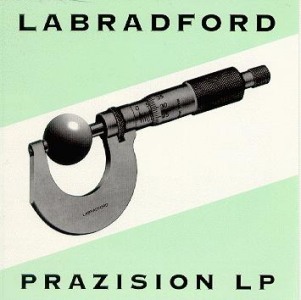
My only prior experience with Labradford came with their third album, 1996’s self-titled release. I picked it up during my obsessions with all things post-rock in the late 1990s, but my perceptions of the genre at the time were ill-suited to Labradford’s approach, so I just ended up baffled. Anyone expecting the crescendos of Mogwai, the tension and release of Slint, the jazzy shuffle of Tortoise, or the apocalyptic landscapes of Godspeed You! Black Emperor would be disappointed by the lack of those elements, or any other traditional structures. Had I been familiar with Talk Talk or Bark Psychosis at the time, perhaps I could’ve wrangled Labradford into that side of post-rock, but at most they’re half in that camp and half in the ambient arena with Kranky peers like Stars of the Lid and Windy & Carl. Labradford drifts between humming organs, reverberating guitar chords, mumbled vocals, and pure drones with scant amounts of forward momentum (“Pico,” “Lake Speed,” “Scenic Recovery,” and “Battered” moreso than the drone-heavy side A), but a larger sense of melody and slow-burning emotional resonance. Returning to Labradford now illuminates an album I’d largely dismissed a decade ago.
Labradford had certainly evolved to that stage over their first two records, which show nascent tendencies that were gladly discarded in a few years. Prazision LP, the very first Kranky Records release from 1993, shuffles between dark drones and skeletal vocal tracks like “Accelerating on a Smoother Road.” Picture a ghostly version of Spacemen 3 haunting a New England cottage, wondering where their drum kit is. Standouts include the lulling melodies of “Soft Return,” the icy vocals of “C of People,” and “Everlast,” which closes out the record with some crests of guitar feedback. (Brainwashed informs me that it was their first single and not included on the original Kranky pressing of the album.) “Gratitute” is a strange tangent, a drone with a modulated voice listing the album’s thank-you list. It’s not representative of its surroundings, but it is indicative of a band trying different approaches as they forge ahead in a new style, hitting some stumbling blocks along the way. Not all of Prazision is captivating, but as the rural origins of their sound, it’s certainly intriguing.
76. Labradford – A Stable Reference LP – Kranky, 1995 – $10
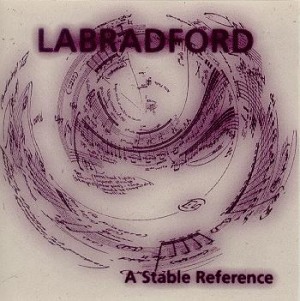
Labradford’s sophomore effort shows marked progress in their style, removing some of the debt to Spacemen 3’s minimalist drugged-out psych-rock and gaining a better sense of how to shape their amorphous songs. There are still a few drone-oriented pieces like “Mas,” “Eero,” and most of “Star City, Russia,” but the appearance of recognizable, reverb-heavy guitar lines makes an enormous difference. The interlocked synth, guitar, and bass in “Comfort” is their most indeliable concoction to date, made all the better by the absence of vocals. “SEDR 77” would be its match, if not for a skronking thread of feedback (I assume) that prevents me from drifting out with the down-beat atmosphere. (Unrelated anecdote: The last time I saw Centaur in Champaign [now roughly four years ago], they debuted a new song that featured a high-pitched loop throughout the entire track. I love Hum and all, but five minutes of a brain-splitting sound like that nearly drove me to murder.) There are plenty of comparably moments, however, like the emergence of the organ midway through “El Lago,” the glacial arpeggios of “Streamlining,” and the nearly optimistic melodic shifts in Banco.” I’ll reiterate how much better Labradford sound as an instrumental band; unlike Windy & Carl, when the vocals usually sift into the guitar drones, the mumbled vocals here rarely congeal properly. It’s a testament to their atmospheric prowess that a properly aligned organ line or a resonant guitar chord aches to be heard without vocal accompaniment.
77. The Wrens – “Napiers” b/w “What’s a Girl” 7” – Grass, 1994 – $1
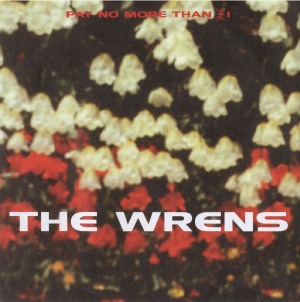
I’ve never been particularly fond of the Wrens, whose brand of indie rock seems a bit too tepid for my tastes (at least my taste of it at the inaugural Pitchfork festival), but I have been fond of their seven-inches for other purposes. Six or seven years ago I dug a dusty copy of the Wrens’ split single with pre-Bright Eyes group Park Ave from the cheap bin at Reckless Records, knowing of Park Ave from the recent reissue CD of their early material on Urinine Records, a similar dollar bin find. A few years later I sold that now out-of-print Park Ave CD for around $30 on eBay and that split single for around $70. I don’t anticipate selling this single for anything close to the split with Park Ave, since their fans are nowhere near as rabid as Bright Eyes devotees, but I figured that it might be worth a shot. If not, it’s only $1. Hell, I might even enjoy it.
I wouldn’t say that these songs converted me into a huge Wrens fan, but there’s something endearingly slapdash about these two tracks culled from their 1994 debut Silver. “Napiers” is considerably more energetic than expected, riding a pounding drumbeat and an unhinged vocal performance to solid ends. I can’t quite place who the vocals remind me of, but it’s half late 90s emo and half modern rock. The flip starts out with some daytime TV soundtrack twinkling, but builds into a churning climax. It’s hard to take feedback-laden catharsis seriously when they interrupt it for snippets of conversation and laughter, but even with that jarring studio trick, it’s a good listen. I imagine that I’ll hold onto this single, but whether I bother tracking down Silver, Secaucus, and The Meadowlands has yet to be determined.
78. Wider – “Triangle” b/w “Bloom” 7” – Stickshift, 1993 – $1
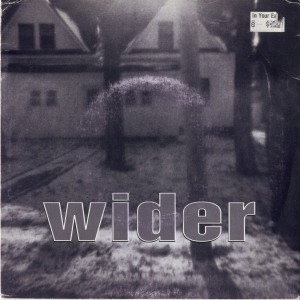
Another dollar, another Wider single. These songs feature Matt Sweeney on bass, which means that it’s been a big week for Sweeney’s pre-Chavez output entering my collection, but I wouldn’t count on Skunk’s sophomore effort Laid finding its way into my CD cabinet by Friday. At least I can be fairly certain that Sweeney’s brief tenure in Wider does not approach the potential embarrassment of Skunk, since Billy Corgan never name-dropped the group during a guest-hosting gig on 120 Minutes. I doubt Corgan thinks too highly of mid 1990s math-rock.
As for the actual songs, the atonal vocals detract from the tricky rhythms and brute force of inspired by early 1990s Pittsburgh-based math-rock (Don Caballero, Hurl, etc.). Hardly a surprise, since Hurl’s vocals were their weak point, too, but I can imagine Matt Sweeney piping up and saying “Hey guys, I can sing a melody here if you want” and the guitarists responding with “No thanks, pal, that’s exactly what we don’t want.”
79. Red Stars Theory– Red Stars Theory CD – Suicide Squeeze, 2001 – $1
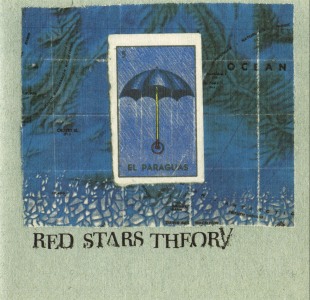
A few days before this trip to In Your Ear, I’d flipped through my LPs and noticed that I own two Red Stars Theory records, their 1997 full-length But Sleep Came Slowly and their 2000 self-titled EP, in addition to a CD copy of Life in a Bubble Is Beautiful. For a band I own three, now four releases from, I can only recall the general approach of their music—a more dream-pop informed version of Codeine’s slow-core, with occasional trips down contemporary post-rock pathways—not any particular songs, although I do remember spinning Life in a Bubble a number of times as a pleasant pre-sleep soundtrack. I purchased this CD knowing full-well I may never listen to it, but part of me was shocked that the group had another release that I didn’t own. The gall of them! As it turns out, this self-titled CD is comprised of their first single and their first EP, a somewhat thankless reissue from Suicide Squeeze, so I’d actually been missing out on two Red Stars Theory releases. How had I survived?
Giving another listen to Life in a Bubble Is Beautiful, the Lois Maffeo guest-spot on “A Sailor’s Warning” and the languid chimes and drifting chords of “An Alarm Goes Off” stand out to some degree, but the album still seems best suited to coax me to sleep, given that two songs have done most of that work. Kip Beelman’s engineering credit sounds well-earned, however, since the layers of sound help make up for lack of hooks. I still have to give this particular album a listen, but first, sleep.
|

